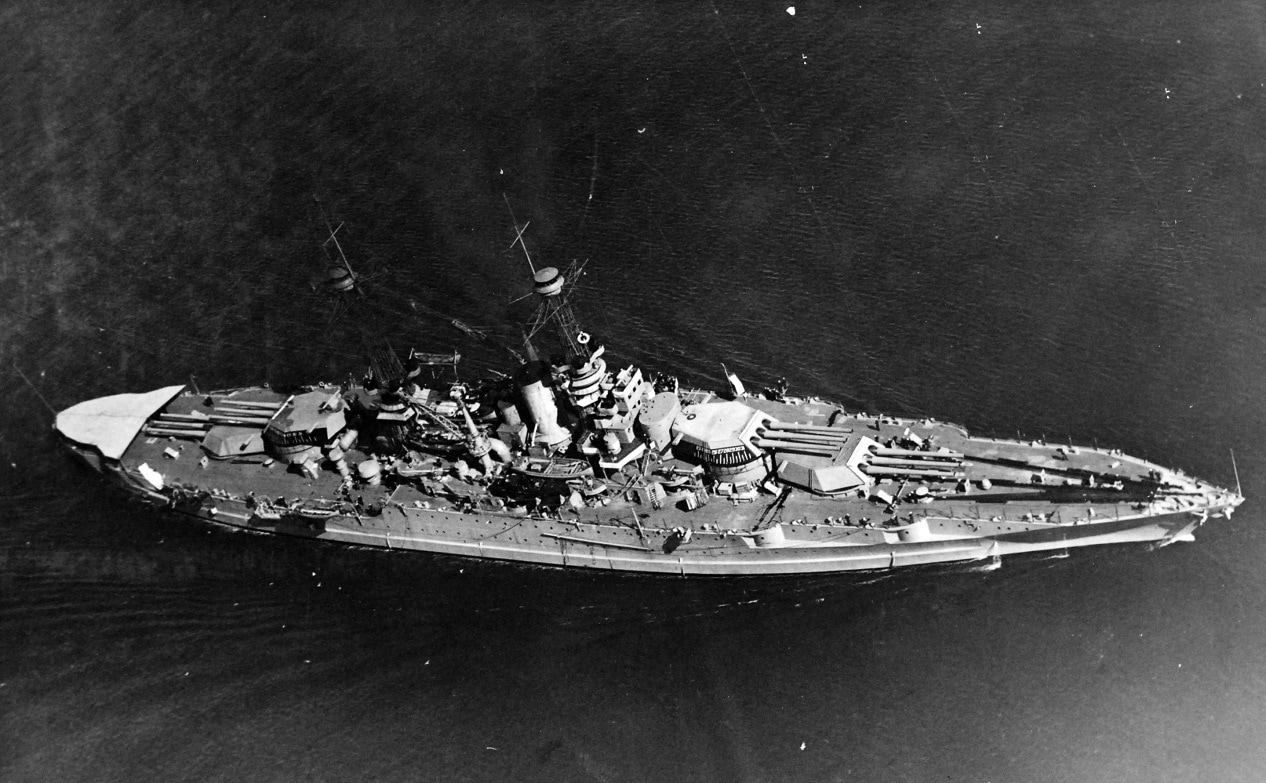The lead ship of a new class of three 32,000-ton battleships, USS New Mexico had been completed at the end of the First World War. While she saw no combat in that conflict, she later took part in the campaign in the Pacific in the Second World War, where she received six battle stars for her service.
USS New Mexico: The Origin Story
On June 30, 1914, just two days after the assassination of the heir to the Austrian throne Archduke Franz Ferdinand, in Sarajevo, across the world the United States Congress authorized the construction of USS New Mexico (BB-40). At the time, American lawmakers couldn’t have expected that within just a month Europe would be at war.
Laid down in the New York Navy Yard in October 1915, she was commissioned in May 1918, by which time America had entered the First World War, and while she didn’t see combat operations, BB-40 was among the U.S. Navy warships that escorted President Woodrow Wilson home from the Versailles Peace Conference in 1919.
Later that year she became the flagship of the Pacific Fleet and was also a regular participant in the Battle Fleet exercises in the Pacific and Caribbean in the 1920s and 1930s.
Modernized at the Philadelphia Navy Yard beginning March 1931, USS New Mexico reentered service with the United States Navy in January 1933. Her original “cage” masts were replaced by the then-modern tower superstructure.
A Capable Battleship
USS New Mexico’s main armament consisted of twelve 14-inch (360mm)/50 caliber guns in four triple turrets – two seated ahead of the bridge superstructure and two seated aft. Secondary armament consisted of fourteen 5-inch (127mm)/51 caliber gun turrets.
As tensions increased with the Empire of Japan in the Pacific Ocean, the United States Navy deployed USS New Mexico to Pearl Harbor, Hawaii in 1940. Yet in May 1941, she was sent back to the Atlantic as part of a show of force to counter German aggression – and as a result, she wasn’t among the U.S. Navy battleships to come under attack on December 7, 1941.
Following the Japanese attack at Pearl Harbor, which left the U.S. with six damaged battleships and two more completely destroyed, New Mexico was sent back again to the Pacific. Throughout most of 1942 she operated off the U.S. west coast and near Hawaiian waters. In May 1943, she was among the U.S. forces that took part in combat operations in the Aleutian Islands to liberate Attu and Kiska.
Island Hopping Campaign
In late 1943 and early 1944, the battleship’s 14-inch guns were used to support the U.S. Marine Corps invasions of the Gilbert and Marshal Islands. She later participated in the conquest of Saipan, Tinian and Guam. Following another overhaul in the United States, USS New Mexico took part in the landings at Mindoro and Luzon in the Philippines.
On January 6, 1945, BB-40 was struck by a Japanese Kamikaze, which resulted in the loss of more than 100 of her crew. However, she was able to remain in action for several more days, and following repairs, USS New Mexico participated in the invasion of Okinawa.
She was also present in Tokyo Bay for the formal Japanese surrender on September 2, 1945. After transiting from the Pacific via the Panama Canal, she arrived in Boston in October 1945 and was decommissioned the following July. Sold for scrap in 1947, USS New Mexico had been a warship that despite her age, more than proved up to the task when America needed her most.
Peter Suciu is a Michigan-based writer who has contributed to more than four dozen magazines, newspapers and websites. He regularly writes about military small arms, and is the author of several books on military headgear including A Gallery of Military Headdress, which is available on Amazon.com.

